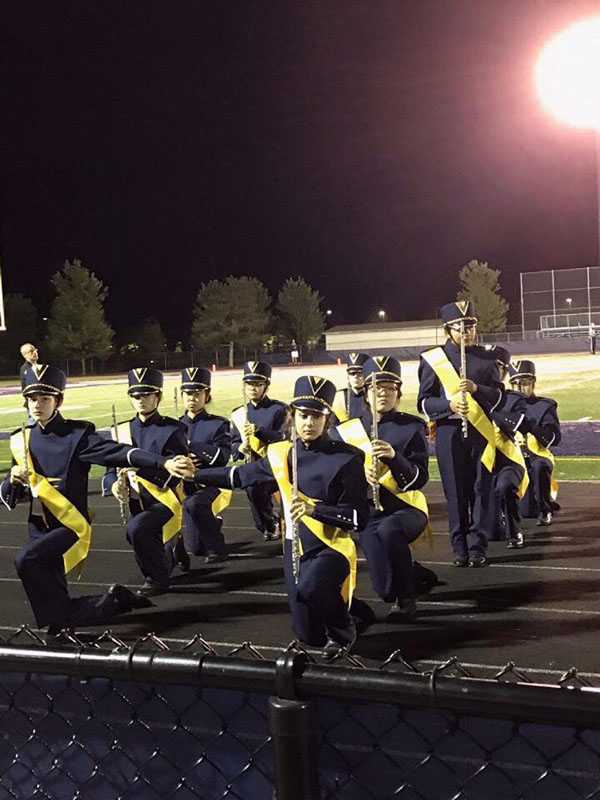South students kneel during National Anthem
Photo courtesy of Kathryn Heyser
Kneeling during the national anthem, some cheerleaders and marching band members decided to take a knee during the anthem. The protest was to raise awareness against police brutality.
October 6, 2017
During the national anthem, prior to the start of the home football game on Sept. 28, select members of the marching band and cheerleading team decided to take a knee while the football and poms teams did not participate.
Colin Kaepernick, former NFL player, brought national attention to protests against police brutality towards African-Americans by kneeling during the national anthem. Despite criticism on behalf of President Trump regarding Kaepernick’s protest, a number of NFL teams decided to link arms and kneel during recent games, demonstrating unity, according to the NFL.
Sophomore Clare Dunne Murphy, a member of drumline, and senior cheerleader Lesly Zavala believe they were the first in their respective organizations to express a desire to protest. They then began plans to kneel during the national anthem. Dunne Murphy says police brutality against African-Americans motivated her to kneel, while Zavala says various current events motivated her—most notably the repeal of Deferred Action for Childhood Arrivals (DACA).
According to Zavala, the intention was not to disrespect the flag. She says she specifically reminded the cheerleaders to keep their hands on their hearts in order to show respect to the men and women who have or are currently serving the country.
“What the flag stands for is liberty and justice for all, as said in the pledge, and land of the free, home of the brave [as stated in the anthem],” Zavala said. “We took the knee because in reality everyone is [not] free. … There are people living in fear every day.”
Senior Zach Adams, a varsity football player, says the team hasn’t talked enough to justify kneeling or locking arms. As these national protests within the NFL continue, however, the team may discuss the issue and future actions.
David Schoenwetter, head football coach, says that while no players on the team knelt, he would be supportive of players who decided to take a knee. According to Schoenwetter, the only thing he asks of a player who wants to protest is that they alert him ahead of time and explain to him why they feel a need to protest.
“I think you should have a well-thoughtout reason for doing something like [protest], and if they did, I wouldn’t stand in their way,” Schoenwetter said. “I’m a proud American, but at the same time, I believe in the First Amendment.”
Josh Koo, assistant principal of student activities, says two parents voiced opposition to the student demonstration with one yelling “shame on you” to those participating. According to Koo, because the backlash from parents didn’t compromise student safety, the issue was dealt with quietly.
The school added extra security and attention to the front interior of the fence in anticipation of any negative reactions, Koo says. According to Koo, also, in preparation of the protest he spoke to members of Students Organized Against Racism (SOAR) and the marching band as a representative of school administration before the start of the game. With the band, Koo says he addressed student concerns and questions about the protest after some students had already decided to participate.
“From a district standpoint, I said we’re apolitical, we don’t endorse it, and we don’t condemn it,” Koo said. “We do acknowledge you have the constitutional right to peacefully protest.”
Anthony Savino, senior football player, says he saw the cheerleaders and band members kneel from the sideline and says team morale decreased as it occurred. According to Savino, he believes kneeling during the national anthem, locally or on a larger stage like the NFL, is disrespectful.
“I understand they want to protest, but kneeling doesn’t do anything,” Savino said. “Why not go out into the community and do something instead of kneeling at a small high school field?”
If the football team were to kneel in the future, Adams says he would want the action to strengthen the movement’s original message against racial inequality and police brutality, not opposing a political figure.
“I would want them to kneel if they were kneeling for the right things,” Adams said. “I’m worried that the original message might be getting lost so I’d want to really focus on that before deciding to kneel or not.”



